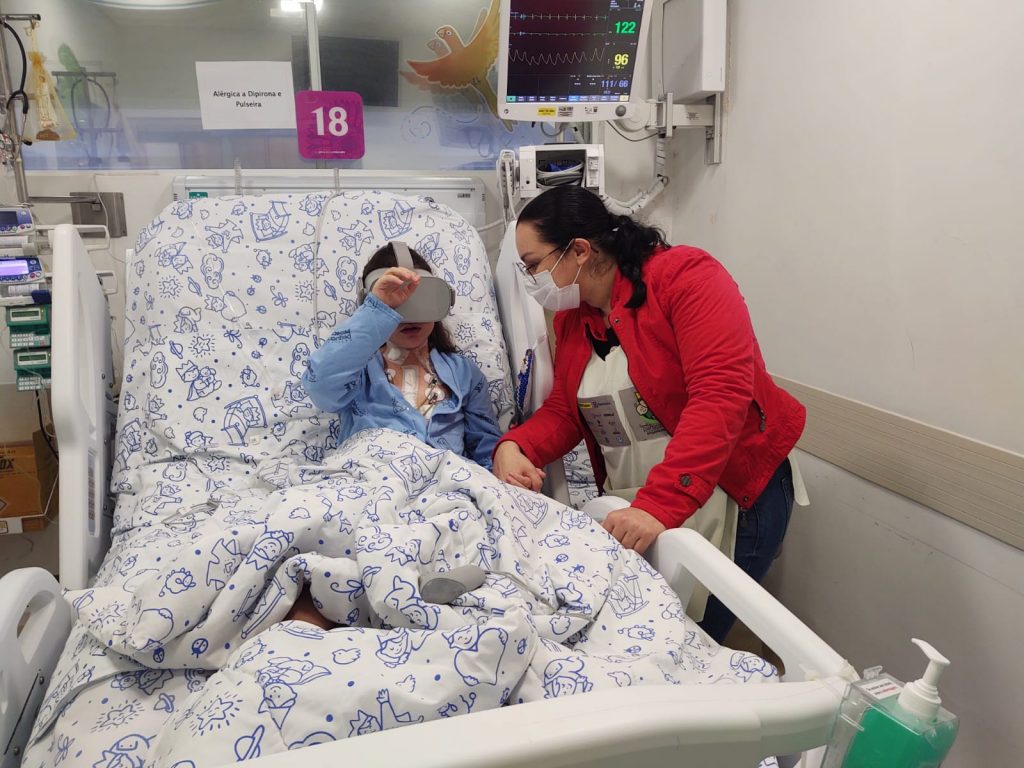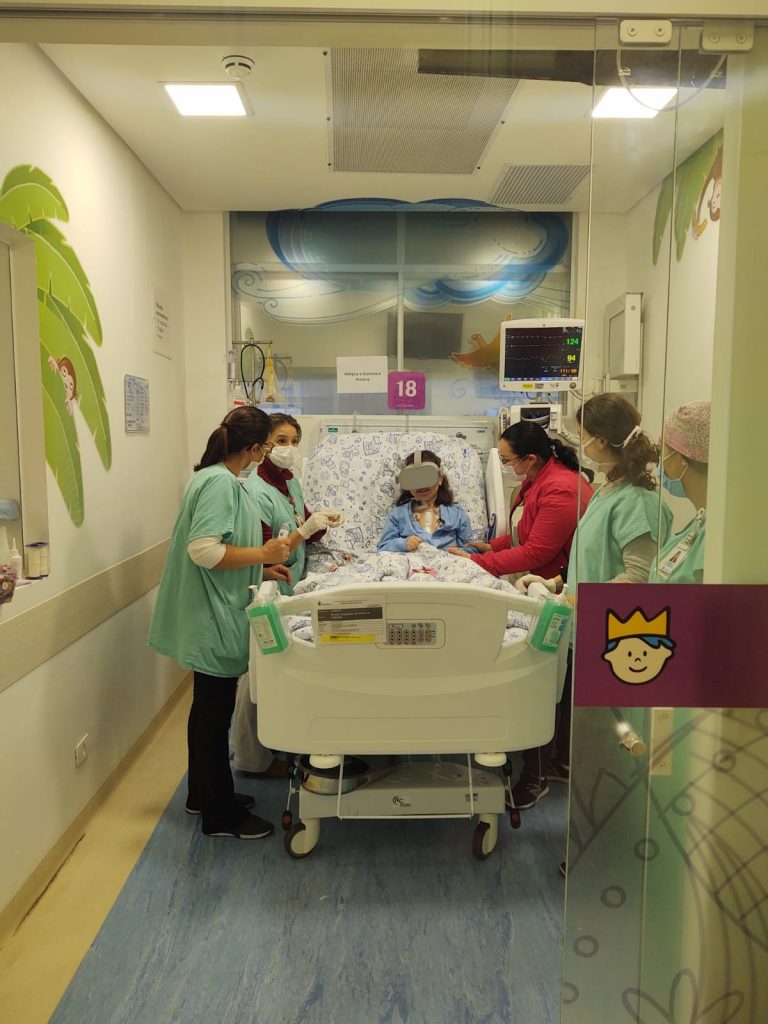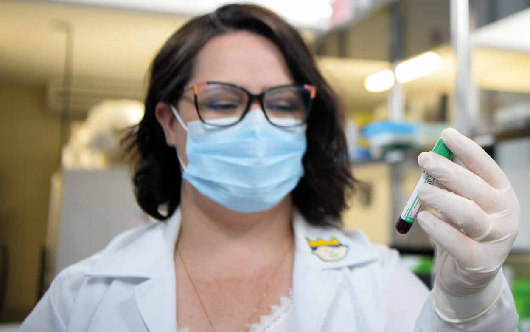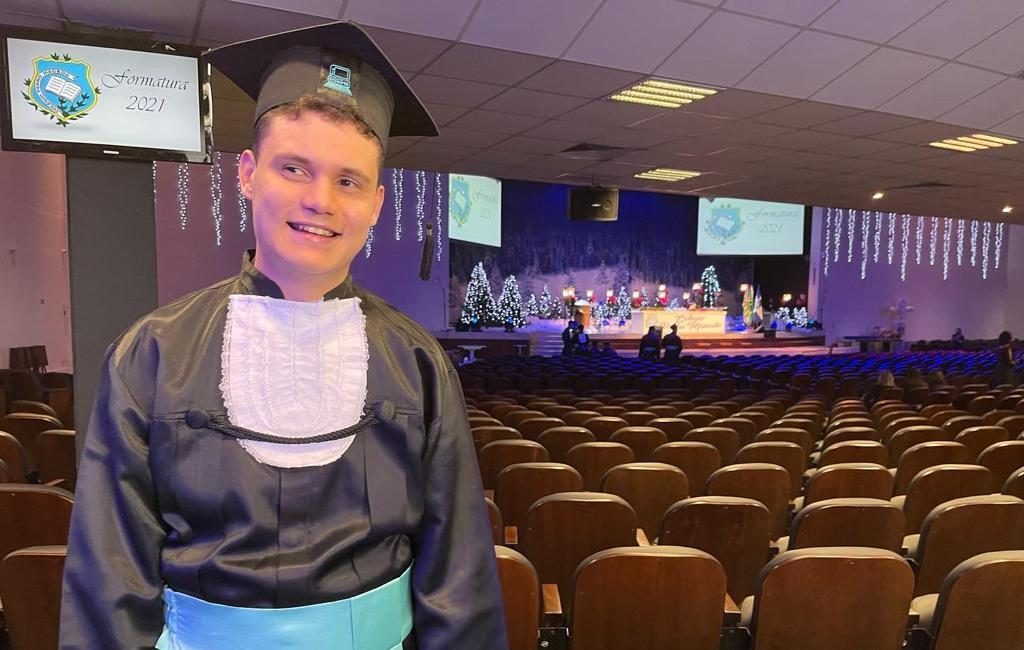Virtual reality glasses help fight pain
Film that simulates a roller coaster helps distract children as they go through procedures that generate anxiety and fear

Maria Isadora was born with a heart issue and, since her birth, the family knew that the unraveling for the girl’s case would be a transplant. Throughout her life she was in treatment, until at the age of nine she had a sudden illness. In a new reassessment, the doctors concluded that the time had come to indicate the transplant. “Maria’s heart was very weak, and she couldn’t take it much longer,” says her mother, Luiza de Araújo. From the day of admission to discharge after the transplant, the little girl was hospitalized for 97 days at Pequeno Príncipe. The transplant was a success, and today she is living a normal life.
The course of these 97 days, however, was full of challenges. One of them was the fear and anxiety that the girl had when she knew that she would undergo a procedure that could cause pain. And, once again, Pequeno Príncipe’s willingness to offer a humanized service made all the difference. “We needed to remove an access that was connected directly to her heart, and when she learned that she would undergo the procedure, she became very anxious, and crying a lot,” remembers medical doctor Rita de Cássia Rodrigues Silva, from the Cardiology ICU. It was then that she decided to start assessing a new way to distract children who need to go through painful procedures: virtual reality glasses.
“I had already been reading some studies about the use of this tool as a form of distraction for children, and as we had the glasses from the Realistic Simulation Center, I decided to assess it,” she reveals. Broadcasting a film that simulates a game on a roller coaster, the glasses were placed on the girl. While the doctor was talking to her about the movie that was playing, the nurse managed to remove the access. “When the procedure was over, I took off Maria’s glasses and she couldn’t believe what had happened,” says the doctor.

After the successful experience in the Cardiology ICU, the equipment began to be used in patients in other sectors. “The goal is really to lessen children’s anxiety and pain. The virtual reality glasses take the child out of the stressful environment in which it finds itself and remove the child to another reality, allowing the procedures to be done in a more harmonious way,” explains Rita.
Research
In order to deepen the knowledge about the effect of virtual reality glasses in the care of children, a survey will be conducted in the Emergency Room of the Hospital with patients who need venipuncture, which is a painful procedure and generates anxiety in children. “Taking as basis the results of this research, we will have scientific evidence generated here in our institution,” emphasizes the doctor. The project has already been approved by the Ethics Committee in Research Involving Human Beings and will begin to be conducted in the coming months.
More
After hospitalization for COVID-19, brothers discover rare disease
Children participated in worldwide research that investigates genetic aspects linked to resistance to the coronavirus
William is a former patient and is fulfilling his dream of becoming a lyrical singer
In autism awareness month, learn about this inspiring story and the characteristics of this condition that affects about seventy million people worldwide, according to the UN









